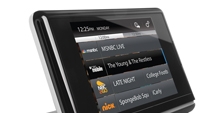Qualcomm CEO's vote of no-confidence on FLO TV

When Qualcomm CEO Paul Jacobs acknowledged (in the Wall Street Journal) that consumers haven’t flocked to its mobile TV service FLO in significant numbers, it wasn’t a huge surprise to mobile aficionados. What was surprising was that he said it at all, given that FLO executives have never revealed subscriber numbers to its service, which offers more than a dozen channels, including CBS, CNBC, Disney, ESPN and FOX in 100 U.S. cities.
The one number that is public knowledge, however, is what Qualcomm paid for the spectrum to make FLO TV a reality: more than a half-billion dollars. AT&T and Verizon Wireless were the first carriers to offer FLO TV on select handsets, and MediaFLO launched its own personal TV device in 2009.
In addition to a slow ramp-up of mobile TV, the adoption of FLO has also been hampered by a limited number of FLO-capable handsets. As quoted in the WSJ, Jacobs sees FLO TV “evolving into a more general system for delivering data to mobile devices that isn't limited to video.”
At the conference, Jacobs also showed Mirasol, a screen technology developed by Qualcomm that allows mobile devices to display highly legible text with color and video capabilities.
Get the TV Tech Newsletter
The professional video industry's #1 source for news, trends and product and tech information. Sign up below.
